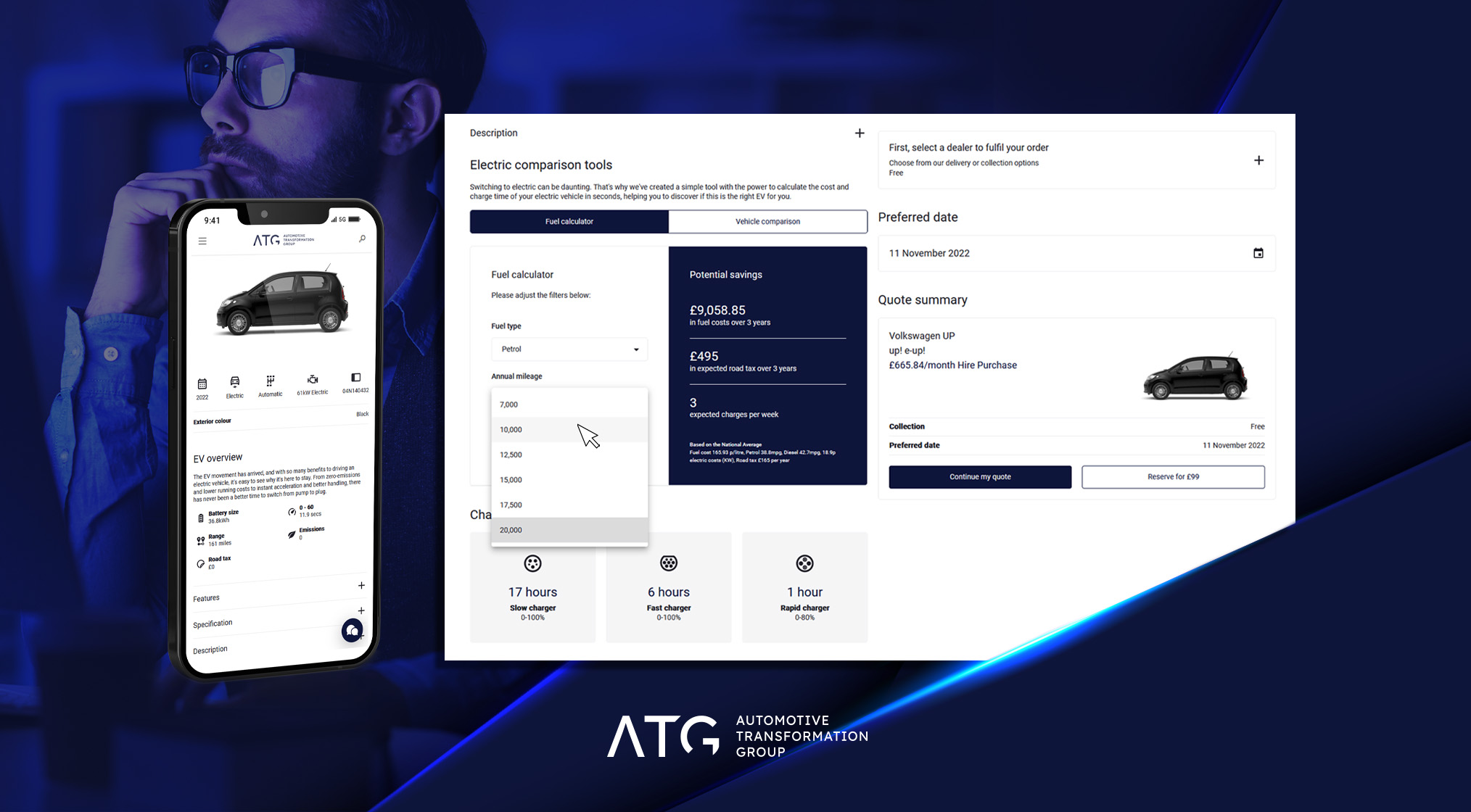Automotive Transformation Group use latest total cost of ownership (TCO) data to develop Electric Vehicle calculator

Leading provider of omnichannel, digital retailing and retention solutions, Automotive Transformation Group have announced the expansion of their EV offering in the form of an intuitive and accurate EV calculator, using the latest TCO data to help consumers make informed choices about their vehicle.
Electric vehicle sales are on an upward trajectory. In a recent article published by the group, the number of EVs sold increased by 94% between September 2020 and 2022. Likewise, the number of EV charging stations increased by 8% between July and October this year alone and are up 34% compared to October 2021. This demand has intensified due to rising fuel costs and an enhanced awareness of sustainability and environmental protection.
With further restrictions on petrol and diesel vehicles expected to arrive by 2030, the automotive industry has seen more manufacturers utilise EV technology than ever before. This has created an unprecedented array of choice for consumers, who in many cases can become overwhelmed by a selection of vehicles they have no experience and/or prior knowledge of.
Automotive Transformation Group’s EV Calculator has been designed with an emphasis on user experience (UX), helping to make the switch to electric as easy as possible for consumers. It can be found within The Group’s ecommerce product, NetDirector® Auto-e and combines the latest TCO data with easily digestible content that relates to typical consumer questions, empowering consumers to make important decisions about their vehicle choice.
Users will be able to search by battery range, which The Group have identified as a key consumer anxiety following extensive research. Once located, each EV will be displayed on an easily accessible vehicle detail page, and using in-house data, will allow consumers to view battery size, performance, and economy at a glance. All of which are based on Worldwide Harmonised Light Vehicle Test Procedure (WLTP) measures, ensuring maximum accuracy. They can then access the total cost of ownership for their chosen EV in line with national averages, showing them three years’ worth of potential savings, based on fuel type and annual mileage.
Using look-up functionality delivered by multiple data providers, they will also have access to a side-by-side comparison of their savings with the ability to manipulate variables including predicted mileage, before ultimately being presented with their custom total annual savings calculation.
In collaboration with the UK’s leading EV charging point application Zap Map, Automotive Transformation Group’s EV Calculator will also feature advanced charging information as standard. This will provide consumers with all the vehicle charging information they need, from charging types and timings to the location of these access points.
This EV calculator forms the next step in Automotive Transformation Group’s mission to streamline and optimise the purchasing journey, making it easier and more enjoyable for their customers to connect with their consumers. The initial pilot will begin in the UK and will extend to other markets in the near future, harnessing more of The Group’s growing proprietary data.
When asked about how their EV Calculator will satisfy consumer demand, Product Director Ben Simpson said “By carrying out extensive desktop research and working closely with our customer success teams to analyse direct enquiries, we have satisfied consumers’ leading concerns, granting them access to total cost to change, battery range and charging logistics. We pride ourselves on our ability to help consumers make the jump to electric with confidence in the ecommerce journey, regardless of whether the consumer is new to an EV or not.”
Chief Executive Officer, Tim Smith added, “There is more emphasis than ever before on how your vehicle choice can impact the environment. And it is important that automotive service providers do what they can to accommodate this demand. By outlining TCO in a user-friendly way, consumers can make the correct switch for them at a time that suits them, and they will be able to do so with conviction. Ultimately, inspiring more consumers to take the plunge. Automotive Transformation Group are excited to be at the forefront of such a sustainable movement, positively impacting the environment in a variety of ways.”






